At the end of 2007, Jill and I bought a farm in Jasper, Georgia. We did this because of a new job. It was one of the dumber things we ever did. We sold a lovely farm near Point of Rocks Maryland, one that we had spent years rebuilding. We were finally starting to reap the rewards of years of hard, back-breaking work rebuilding old barns, a house and putting up fence. Once there, the company I had gone to work for quite literally lost the government contract (because of executive actions to hide problems) and pulled up stakes from the USA a few months after we relocated. All of the sudden, I was out of a job, and then the housing market crashed. Big time. Our farm lost at least 50% of it value overnight.
We continued on with our consulting business, but the real estate market in rural north Georgia never recovered. Our mortgage was well underwater, and as it was a farm, the interest rate was high. Farm loans are considered commercial loans and interest rates are always higher than residential rates.
Finally in 2013, we managed to get out of the mortgage, but we lost our all the equity and more. We fled Georgia back up to the Virginia area - where most of our clients were located.
So, for three years, we leased a farm in Virginia- first one, then another - saving up to buy another farm.
Because we breed horses and had re-built numerous old farms over the years, we knew that homesteading a place was within our skill set. Jill had pretty much grown up on an avocado and lemon ranch in California, where I had spent much of my youth - working for her father planting, pruning, harvesting and tending orchards. I had spent summers during my teen years working on my Aunt’s eastern Oregon dairy farm. So, for our whole lives farming has been in our blood. Although, I was clear with myself, the next would be the last. I am getting too old for this, I told myself. But taking on such a project is not for the faint hearted. Six years into this, and it is still not finished. Not sure it ever will be.
Buying raw land is a difficult thing. For one, generally it is almost impossible to get a loan for the purchase, and if you do find a bank willing to loan, the interest rates are always exuberantly high. Sure, there are various government agricultural loan programs, but unless you are already farming those programs are not readily available to the average Joe. We have filled out way too many farm loan applications in the past, only to be turned down or be offered an interest rate that made no sense financially.
The other route for a land loan is to get owner financing. People with land to sell are often willing to do short term loans. This is because conventional financing is so difficult, it makes it hard to sell such land. But they will still want a fair chunk of change for a substantial down. So save, we did.
Of course, the key to a mortgage is short-term. The dirty secret in the mortgage industry is that 20 or 30 year mortgage is an interest money-maker. The home owner spends years just paying off interest, before they even begin to pay off the capital. This is how mortgage companies make their profit. Now, - having stepped away from traditional financing options - those long term mortgages feel like a bit of a scam. In retrospect, we will never get a 20 or 30 year fixed-rate mortgage again. A short term loan starts paying off the equity almost immediately. A five year mortgage is perfect. It means less property but it also means foreseeable economic freedom.
In the early summer of 2017, Jill found almost 30 acres of raw land in Madison County, VA. Madison is a conservative, rural county, up against the Shenandoah mountains. One of the largest counties in VA, the current population is just about the same as it was during WW II. It is located close enough to a couple of small cities, and 1.5 hours from DC and major airports. We bought the property for $225,000.00 with a 50,000.00 deposit. The owner financed and we had five-years to pay it off.
This land had been essentially abandoned for many decades, with the main house having burned down in the 1940s. A rock quarry had been on the property in the 1960s, which created a canyon and pond in the forest at the back of the property. The property is truly magical. It is like owning a bit of national park.









We have a creek that runs in a horseshoe bend around much of the perimeter of our land. One down-side was that the rolling pasture land was poor quality, but it wasn’t too steep, minimizing erosion concerns. The upside was that the building sites were gorgeous - with views that are mind blowing. The weather in central Virginia is about perfect. Winters not too cold and summers not too hot - for our hot-blooded tastes.
A local farmer had made hay off the pastures for years, but those bales were just basically weeds for cattle. The making of hay for decades without putting anything back into the earth had pulled all the nutrients out of the soil decades ago. All the barns and out buildings had been left to rot for 60+ years. Over the decades, climbing vines, including poison ivy, wisteria as well as trees had encapsulated the structures, until no one even knew it was once a thriving farm. Heck, no one could even see the buildings! The driveway in - was hidden from the street. The old farm had essentially returned to wilderness.
Below are some photos of the outside of the structures on the farm that we took during the summer in 2017.
Was there anything here worth salvaging?









We were determined to bring back as many as the old buildings as possible. These old farms are our American history. Jill and I just love them and what they represent. The work ethic of prior generations. To restore the broken, to live in generations old buildings - it means something to us.
The interior of these buildings was just plain old gross.


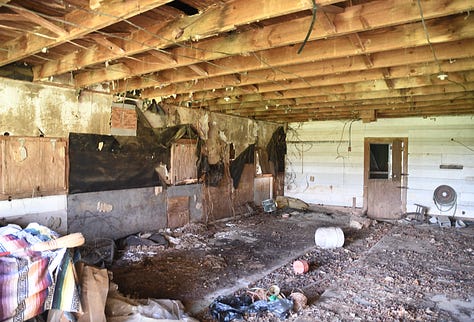





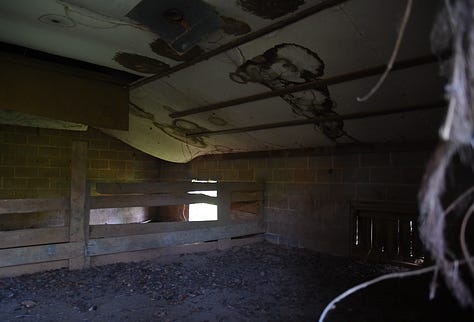
But priorities.
At this point, we were renting a horse farm (not a cheap date) and now had become land owners with a mortgage. Getting the horses, some chickens, four dogs and ourselves living on to the property was priority one. It had to happen almost simultaneously, as neither the horses or dogs could be left alone during the night.
We bought the property in the beginning of July, 2017 and our rental farm lease was up end of September. A tight timeline!
That meant temporary fencing for the horses. Electric fencing still requires pounding in fence posts, electric boxes, wiring, insulators and hotwire. Jill did a lot of that work.
A well had to be dug ASAP.
The property did not have water, electric or septic (or a residence, or fences..). The debris from the huge barn that had burned down in 2004 had been left to rot. That all had to be cleared off. The gravel road had to become passable for winter. Then we needed to get something to live in temporarily. We toyed with living in one of the old buildings, but they were going to take too much work. So, clearing land, electric, septic, water became priority one for me. That was the start to getting us a place to live for the winter on this abandoned paradise.
We camped out when we could. Mostly, we drove back and forth from the rental 45 minutes away. At that point, we were both working on our own consulting business full time. We had professional clients relying on us, so all the while we had to maintain as if we were living perfectly normal lives. But we were also working on the new farm full time. We were throwing hay and water at our horses twice a day. Basically, it was working 6:00 AM to 11:00 PM every night that year. But that is what was needed and we did it.
However, the dogs didn’t seem to mind the camping! Neither did Jill and I. Truth be told, we are often happiest when we are outdoors.


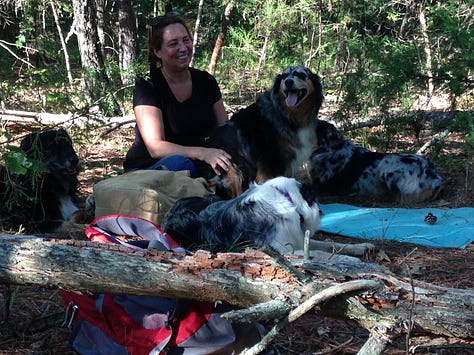
Some of the below images and text are from old posts facebook posts of Jill’s.
Finally we got the horses over.
To say were were doing this on a shoestring is putting it mildly.
But we were making progress~
We were determined not to take out loans - to live loan free, in order to be free.
It stretched my skills as an electrician to put in the breaker box and wiring for electric hook-up, but I got it done.
Having a tractor was critical in all of this.
The photos below document that buildings and the farm is starting to come back to life.






How to move us on to the property without a house? See that office trailer on the top left photo?
We searched on craigslist for motor homes, trailer homes, etc and in the end, found an office trailer for $4,000.00. It was unsightly but useable. Jill painted the interior and put in new flooring. I painted the exterior and installed a little kitchen.
Lots of prayers were made that year, prayers that the county didn’t figure out that we were actually living in an office trailer. Living in an office trailer is most definitely not allowed in our county. So, we kept a very low profile. Which was kind of hard when water and electric inspectors are showing up!
We didn’t have electricity or running water in the trailer. So we would lug in five gallon containers to place on the counter for cooking and clean up. At first, we just camped - we did have a grill. I relied on a generator for our computers and used battery lights.
We used a porta-potty. For showers, we drove up to the local gym in Culpeper, 20 minutes away twice a week.
Almost everything we owned went into storage. And you know what? We did fine. More than fine. We thrived.
It felt as close to living in nature as we had ever come.
Living in less than 400 square was intimate - we spent much of our time outdoors, it felt like we were living next to God’s house. It felt right.
There were a few things that were truly awful. Washing up without hot running water was not nice. When we did get electricity, cooking with only a tea kettle, microwave and electric fry pan for months on end got old. Living with four dogs in that tiny space got old too.
Once we got running water and electricity, it got a little easier. Jill could take a cold bath outside. She is not big on public showers. We still didn’t have a septic system.
And then there was the porta-potty - well, shitting in the woods may sound romantic, but running to the outside privy at 3:00 AM night in freezing rain- not so nice. Just no. We do actually have bears and feral hog on the property - so creeping around at night was well, creepy. Not to mention, when winter came, outside was treacherous at times.
It certainly gave us motivation to get a septic system and real house on the property!
We had decided to try to rebuild the old house. Although this was a house, the county balked big time and said that since this house was built before occupancy - they would make us rebuild to current new building codes. This was impossible, due to the framing of the old structure.
Madison county likes to control growth by being horrible about building permits and inspections. However, if a farm is designated as agriculture (showing profit) - then there is no permitting needed on that structure- but only for farm uses, not for residential. One advantage to living in a rural community is that often the rules around agriculture tend to be more friendly.
So, after much heartache and speaking with people who spent years trying to get new houses approved - we moved on plan B - get a modular home on the property as quickly as possible.
So by spring of 2018, we had saved enough to think about a “real” house.
Preview: The old house gets a facelift and becomes an agricultural office for the farm, rather than a residence.
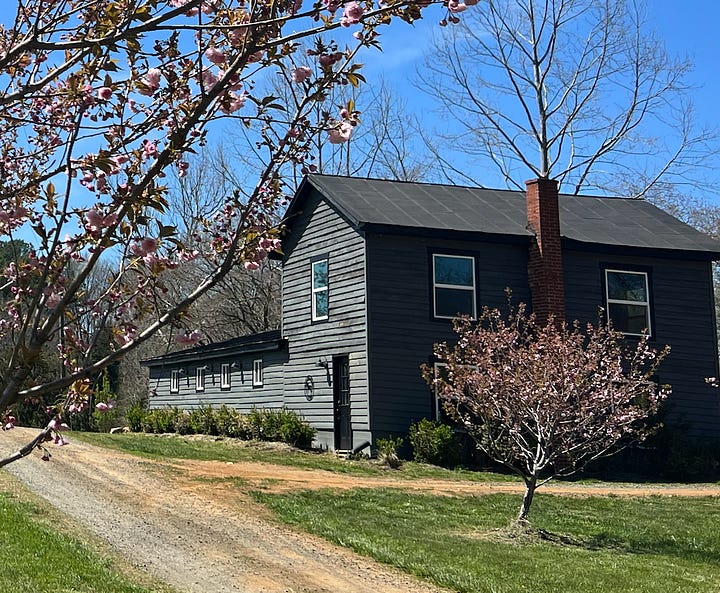

- The interior is not finished, it still a work in progress.
Part 2 - coming soon:
The next chapter of the farm was how to build infrastructure on a budget and the death of my father.
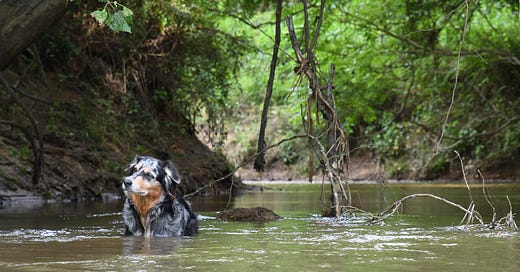




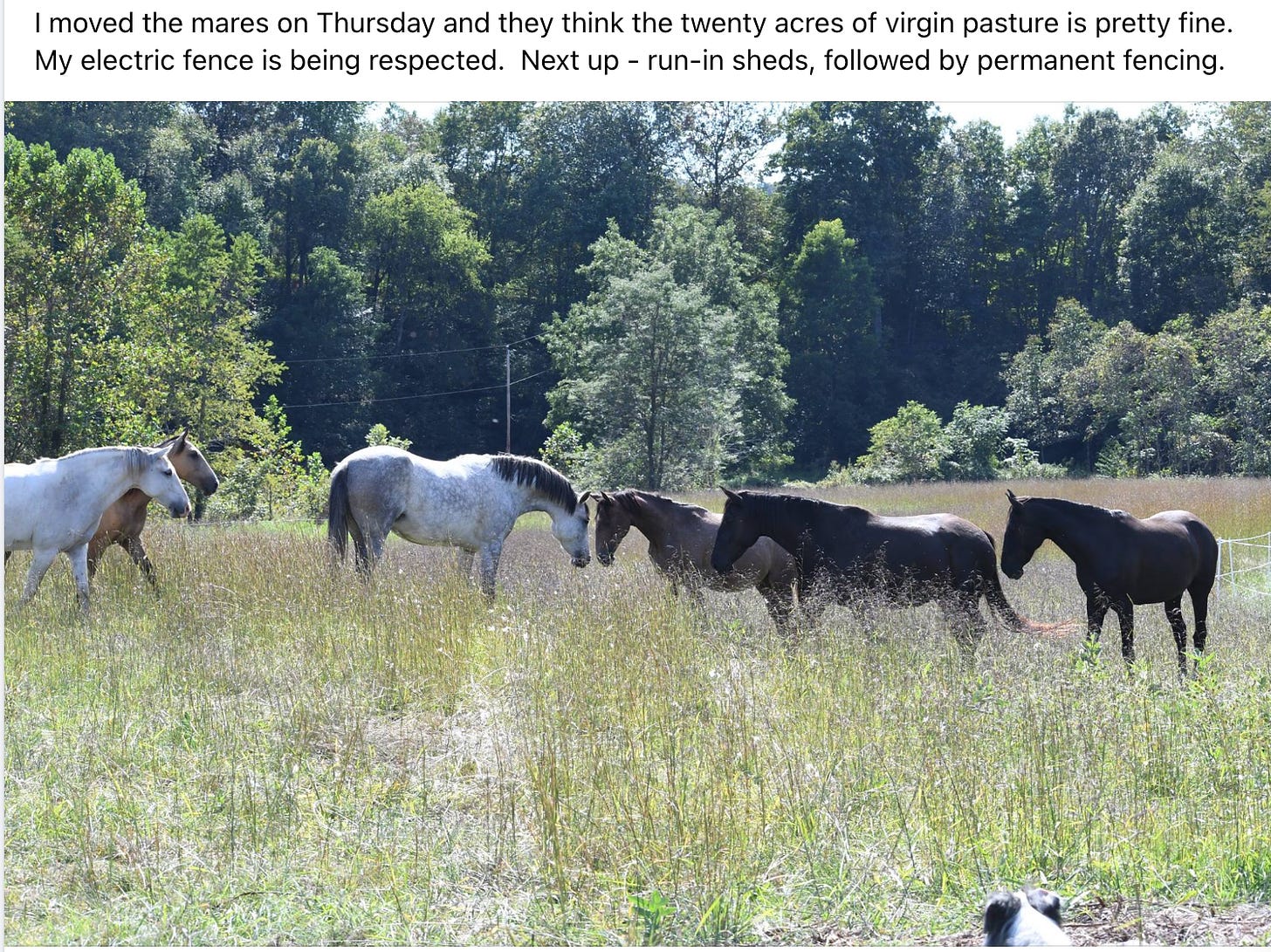


I thoroughly enjoyed reading this. Thanks for sharing this story.
I've always appreciated the sanity of your viewpoints, Robert, and the humanity of your medical positions—but when you write about being a man (and a woman!) of the earth ... all the previous impressions that shine through your work, make complete sense and make you all the more credible. I was raised on a 350 acre horse and cattle farm outside Middleburg, VA. (Fauquier County) I've renovated (by hand and alone except for two dogs, a cat and a Lippizaner stallion named Golly Gee) an off-grid cabin and 100 acre farm in North Georgia, then moved to Washington State and started over, buying 21 ares of raw land and doing the "up from scratch" thing. (With a partner this time thank God!) WHEW! I don't want to split hairs about what constitutes "reality." But living on and working the land for 80% of my life has grounded and supported all the other stuff—the research, the writing, the talking, the traveling ... the CARING—life itself feeding the desire to stand up for life, keeping it all in perspective. Bless you and thank you for all that you and Jill are and do!!!